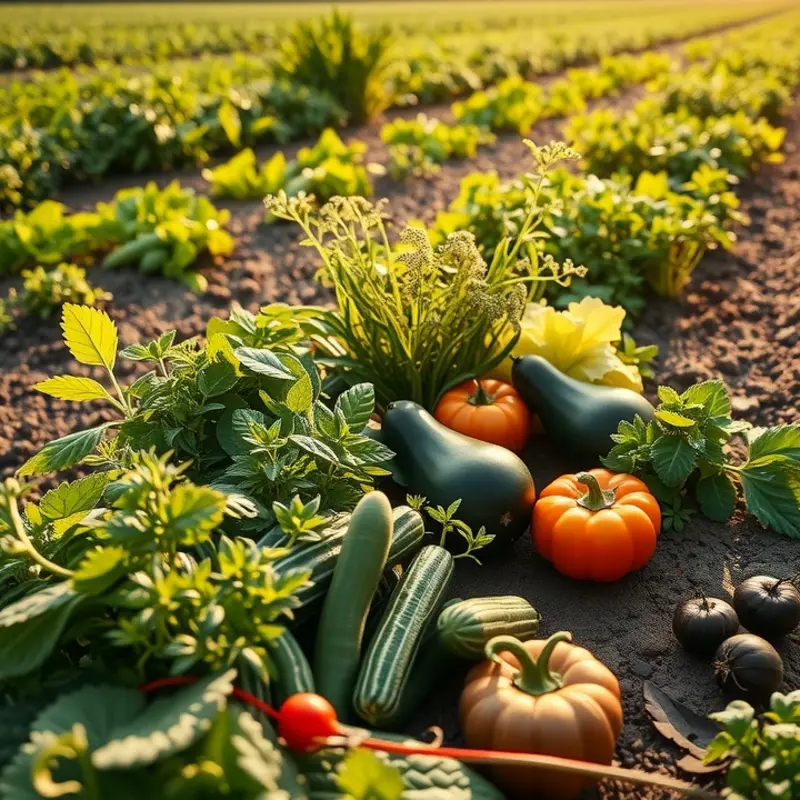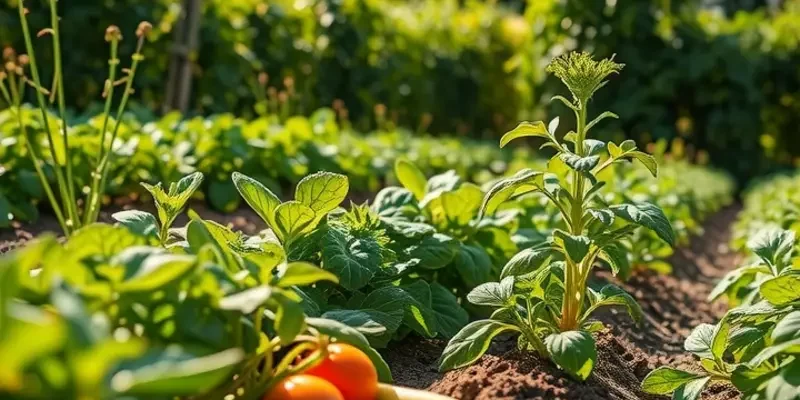Cooking without peppers can open up a world of possibilities in the kitchen. Whether due to allergies, dietary preferences, or simply personal taste, there are numerous ways to bring flavor and vibrancy to your dishes without relying on peppers. This guide offers practical ingredient substitutions and flexible approaches that enhance your cooking while keeping it appealing and nutritious. Say goodbye to bland meals and hello to exciting flavors that cater to your unique cooking style.
Flavorful Alternatives to Peppers

In the quest for vibrant and flavorful dishes, it’s entirely possible to create meals with complexity and character without relying on peppers. By diversifying the ingredients in your pantry, you can creatively replace or mimic the qualities typically attributed to peppers.
Aromatic Basics:
Onions and garlic are fundamental to many cuisines worldwide and provide a depth of flavor that peppers offer. Both ingredients can be used raw or cooked, and they’re the backbone of endless savory dishes. Consider sautéing chopped onions and minced garlic as a primary step to build flavor in soups, stews, and sauces. When onions are caramelized, they become sweet and rich, adding complexity to any dish.
Spice It Up:
For those who miss the heat of peppers, spices such as paprika and cayenne pepper are excellent choices. Paprika, available in sweet, smoked, and hot varieties, imparts color and a mild spice. Cayenne brings intense heat, so a little can go a long way in mimicking the kick of hot peppers. Combining these spices can provide both the color and heat reminiscent of peppers. For more spice ideas, check out our flavor boosters guide.
Greens Galore:
Spinach and kale introduce freshness and a burst of color to your dishes. While they don’t have the same spiciness as peppers, their earthy flavor profiles and nutritional benefits can enhance a dish substantially. When cooked, they tenderize well and can be quickly incorporated into stir-fries, soups, or even blended into sauces.
Rooted in Crunch:
Root vegetables such as carrots and celery offer a satisfying crunch and a slight sweetness, providing a worthy textural substitute for chopped peppers in dishes like salads, stir-fries, and roasted vegetables. Celery brings an aromatic note while carrots add a touch of sweetness. These vegetables can also be finely diced to mimic the appearance and feel of bell peppers in various recipes.
Practical Tips for Incorporation:
- Sauté Onion and Garlic: Start your base with onions and garlic for depth in sauces and stews.
- Spice Blends: Use custom blends of paprika and cayenne to achieve desired heat levels.
- Add in Greens: Throw spinach or kale into hot soups or pasta just before serving, maintaining their vibrant color.
- Root Vegetables: Chop them finely for soups or julienne for a fresh salad feel.
Finding alternatives for peppers does not mean the end of flavorful, exciting cuisine. It encourages exploring vast flavor profiles and combinations, ensuring your kitchen remains dynamic and full of zest.
Seasoning: Beyond the Ordinary

Unleashing the full potential of your dishes doesn’t require peppers. Instead, explore an array of herbs, spices, and unconventional seasonings that enrich flavors. Dive into the world of basil, oregano, and thyme—each offering a distinct taste profile.
Basil, with its sweet undertones and refreshing aroma, is a versatile herb. It pairs wonderfully with tomatoes, enhancing pasta dishes, or adds depth to a simple vinaigrette. Try a sprig of fresh basil, finely chopped, in your salads or an infusion in olive oil.
Oregano is bold, robust, and slightly bitter, making it perfect for roasted meats or Greek-inspired cuisines. Sprinkle dried oregano on roasted vegetables or use fresh leaves to flavor fish. Remember, a pinch can transform a dish, so use it sparingly.
Thyme provides an earthy, slightly minty flavor. It’s exceptional with roasted or braised meats, as well as in creamy sauces. Fresh thyme leaves delicately balance savory dishes. A few sprigs enhance a simple lemon chicken or elevate a homemade soup.
Exploring citrus juices can add brightness to your meals. Lemon or lime juice imparts acidity and freshness. A dash can cut through the richness of a creamy sauce or enliven a simple marinade for poultry or seafood.
Vinegars offer another dimension, with their varied flavor profiles. Apple cider vinegar’s fruitiness complements slaws and dressings, while balsamic’s sweet-tartness enriches stews or drizzle over grilled vegetables.
Delve into the realm of fermented ingredients, such as miso. Its umami-driven depth brings a savory richness to broths, soups, and even salad dressings. Be mindful of its potency: a teaspoon can suffice to layer complex flavors in a dish.
Balancing these ingredients is crucial. Creating a harmonious dish involves understanding pairing options and ratios. For example, balance citrus’s acidity with a touch of honey or complement thyme’s earthiness with a splash of white wine.
To further your exploration of seasoning without peppers, consider reading about flavor boosters without salt. This resource will enhance your culinary creativity by expanding your toolkit beyond conventional means.
The art of seasoning beckons you to experiment, blending these ingredients mindfully to compose dishes that tantalize the taste buds, making each meal memorable without relying on peppers.
Final words
Cooking without peppers can be an exciting and flavorful journey into culinary creativity. With a variety of tasty alternatives and the right seasonings, you can craft meals that are as vibrant and satisfying as their pepper-infused counterparts. Taking the time to explore these substitutes not only enhances your cooking skills but also provides a balanced approach to catering to dietary restrictions or preferences. Embrace these strategies, and remember that with a little ingenuity, every dish can shine brightly, pepper-free.







